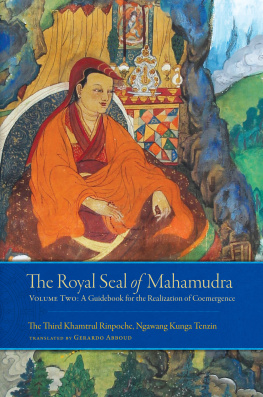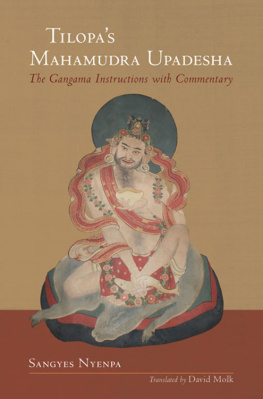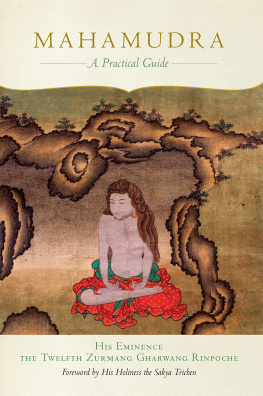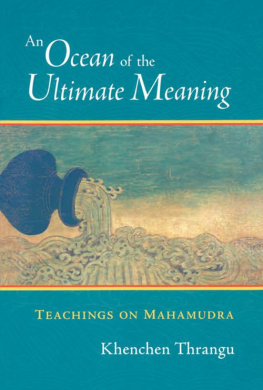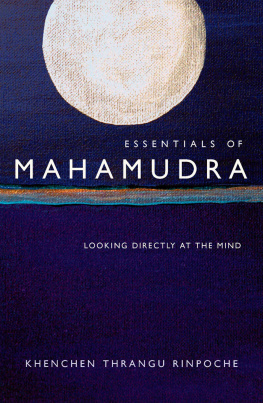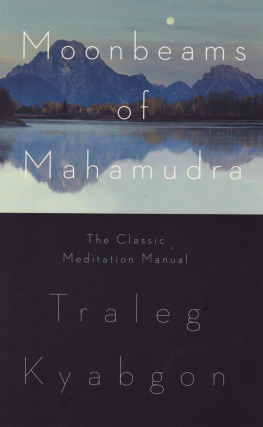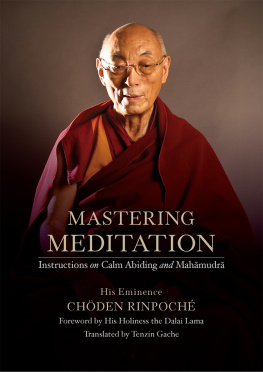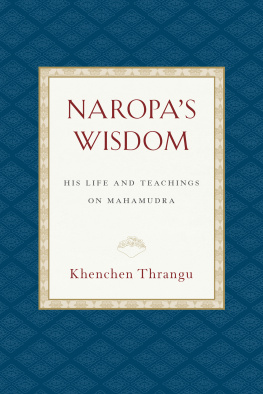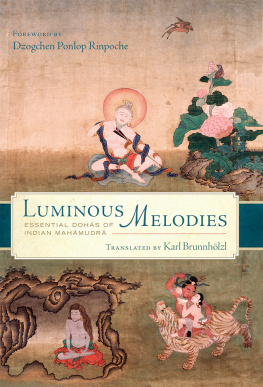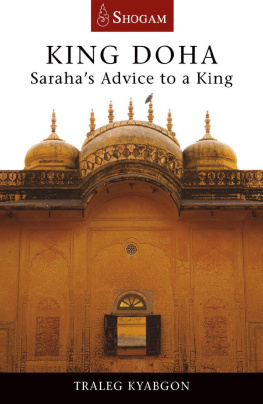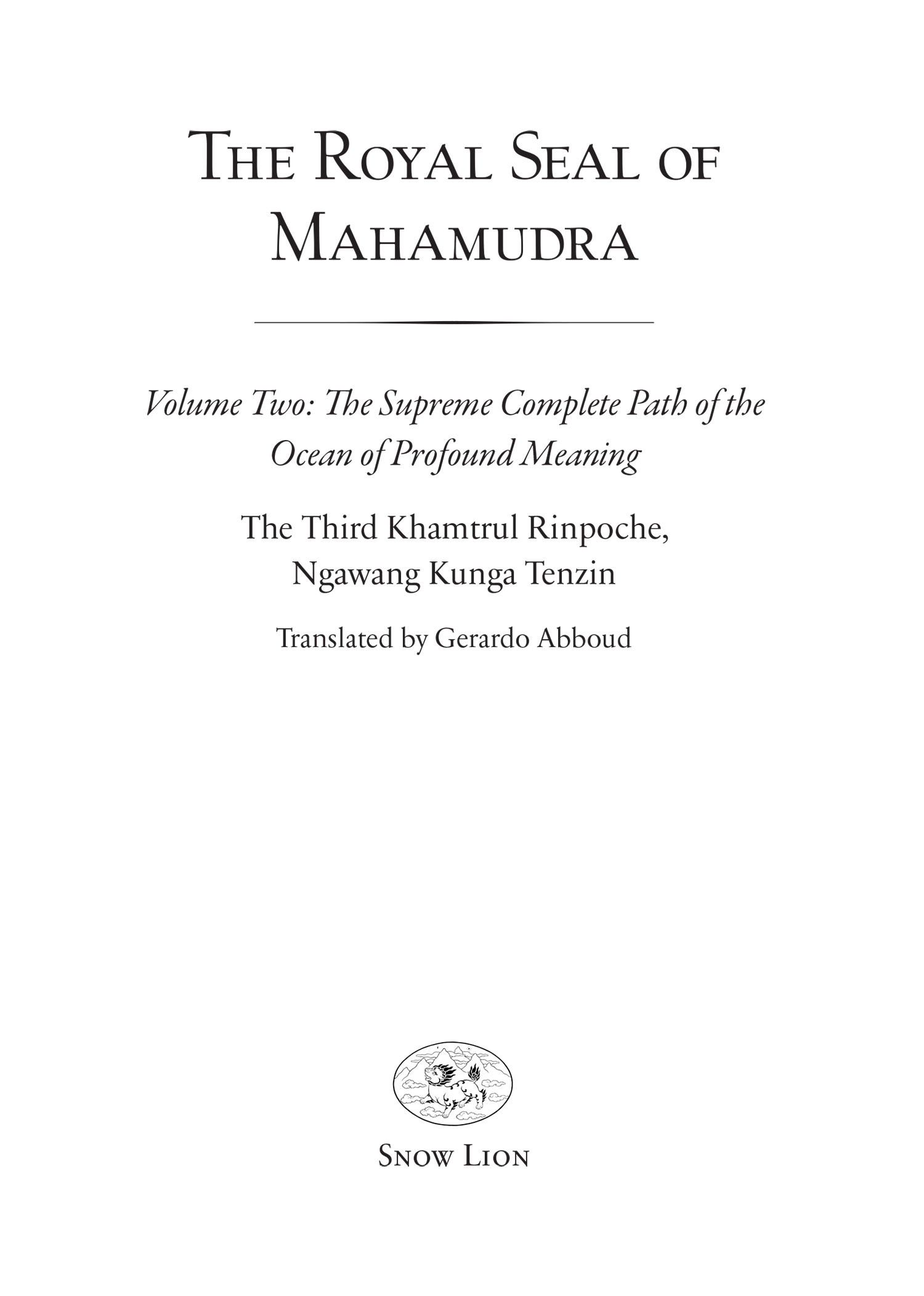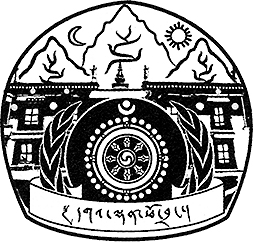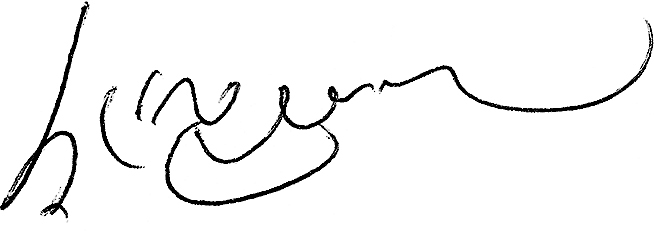Contents
Landmarks
Print Page List
S NOW L ION
An imprint of Shambhala Publications, Inc.
4720 Walnut Street
Boulder, Colorado 80301
www.shambhala.com
2020 by Gerardo Abboud
Cover art: Thangka painting of Ngawang Kunga Tenzin used courtesy of Drugu Choegyal Rinpoche
Cover design: Gopa & Ted2, Inc.
All rights reserved. No part of this book may be reproduced in any form or by any means, electronic or mechanical, including photocopying, recording, or by any information storage and retrieval system, without permission in writing from the publisher.
L IBRARY OF C ONGRESS C ATALOGING - IN -P UBLICATION D ATA
ag-dba-kun-dga-bstan-dzin, Khams-sprul III, 16801728, author.
[Phyag rgya chen po lhan cig skyes sbyor gyi dgnos gii khrid yig zab don rgya mtshoi lam tshang bla na med pa. English]
The royal seal of mahamudra: a guidebook for the realization of coemergence /
The Third Khamtrul Rinpoche, Ngawang Kunga Tenzin; translated by Gerardo Abboud.
pages cm
Includes index.
ISBN 978-1-55939-437-6 (Vol. 1)
ISBN 978-1-55939-489-5 (Vol. 2)
eISBN 9780834842946
1. Mahmudr (Tantric rite)Early works to 1800.
2. MeditationBrug-pa (Sect)Early works to 1800.
I. Abboud, Gerardo, translator. II. Title.
BQ 8921. M 35 N 3313 2014
294.34435dc23
2014013424
a_prh_5.5.0_c0_r0
THE DALAI LAMA
F OREWORD
M AHAMUDRA IS a set of teachings and practices that represent the essence of Highest Yoga Tantra, highest of the four classes of Buddhist tantra. It is generally associated with the Chakrasamvara cycle of tantras and is known for being a unique tradition for the practice of clear light, the nondual wisdom of bliss and emptiness. The Kagyu, Sakya, and Gelug traditions of Tibet each transmit lineages of mahamudra presented in their own distinctive manner of explanation and with their own individual style of meditation. The tradition was brought to Tibet primarily by Marpa Lotsawa, who received it from his Indian masters Naropa and Maitripa.
I welcome this English translation of the Royal Seal of Mahamudra, a work of practical instructions in the profound practice of mahamudra by the late seventeenthearly eighteenth-century Drukpa scholar Ngawang Kunga Tenzin. He was the Third Khamtrul Rinpoche and founder of the monastery popularly known as Khampagar. The book adds to the growing body of authentic Buddhist tantric literature available in English. I congratulate Gerardo Abboud for the evident dedication he has brought to the work of translation and offer prayers that readers who are moved to engage in the spiritual practices outlined in this book will meet with success.
Tenzin Gyatso, the Fourteenth Dalai Lama
April 5, 2014
F OREWORD
BY THE NINTH KHAMTRUL RINPOCHE, SHEDRUP NYIMA
This exceptional text containing a complete and vast series of instructions
On mahamudra, the heart of the profound true meaning,
Was composed by Kunga Tenzin, an emanation of Guru Rinpoche.
The devoted and learned translator Gerardo,
With no regard to hardships, for a long time
Took on himself this good deed with a pure motivation,
Through the power of which he translated this book into English
A medicine for the Dharma and sentient beings.
I dedicate this merit toward great enlightenment.
May it be the cause for establishing all beings in everlasting happiness.
by the Tulku bearing the name Dokhampa
F OREWORD
BY DRUGU CHOEGYAL RINPOCHE
T HIS GUIDEBOOK to the main practice of mahamudra by the great Third Khamtrul Rinpoche, Ngawang Kunga Tenzin, is for me a deep wisdom melody resounding in the heart and awakening innate enlightenment. For anyone who reads this mahamudra text translated by my Dharma friend Gerardo Abboud, I am sure it will be the same. This book can help us to achieve the most precious glory of our wonderful human life, the realization of mahamudraa goal far superior to material success or freedom from mental stress. How wonderful it is to awaken to the innate infinite wisdom, filled with the true wealth of genuine love and selfless compassion toward all beings in the whole of space! This book is a living book: every word speaks with the profound, boundless, warm, loving breath of the author up to the present lineage masters.
T RANSLATORS P REFACE
O NE OF the meanings of the term mahamudra is great seal, the analogy being that just as the subjects of a kingdom do not go beyond the command-seal of the king, all phenomena of samsara and nirvana without exception are not beyond mahamudra, or suchness.
For a practitioner of mahamudra, or any of the contemplative traditions of Tibetan Buddhism, instruction guidebooks are a source of advice on how to enhance inspiration and tune our practice so that mistakes can be avoided. Such manuals have been written by truly realized beings who express their immense experience of practice and realization in the written word. Whether in an isolated retreat hermitage or at home, practitioners often do not have ready access to a teacher the very moment that advice is needed; however, a manualthough in no way equal to the direct instruction from a qualified teacherremains always at hand to help clarify doubts and suggest techniques for removing obstacles.
This guidebook for the main body of the practice of mahamudra is one of the most complete and detailed commentaries on the four yogas: one-pointedness, simplicity, one taste, and nonmeditation. I started reading it many years ago while in India, and decided to translate it in 1983, while I was in retreat at Ven. Sengdra Rinpoches retreat center in Nepal, near the border with Tibet. Although the first draft was completed there, I was only able to resume work on it in 2010.
The Tibetan text has two main sections: the first covering the introduction and main body of the practice and the second including an introduction to mind essence from various approaches as well as detailed instructions for removing obstacles, enhancing the experience, distinguishing between experiences and realization, and elaborating on other aspects that complete the mahamudra path.

